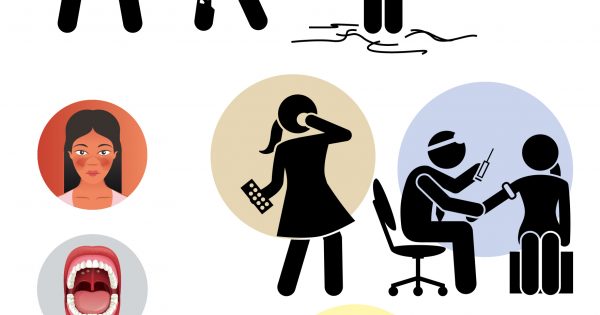“I hear that some vaccines, like the one for polio, might induce the disease instead of prevent it. Is it safer for my child not to have the vaccine then?”
Our children have benefited more from vaccines than from any other preventative programme in medical history. And because of the vaccines’ effectiveness, some parents begin to wonder:
Do we still need vaccines? Do their benefits still outweigh their risks?
The answer is YES.
Before the availability of vaccines:
- Thousands of children were paralysed from polio every year.
- Rubella caused birth abnormalities in newborns who later became mentally retarded.
- Diphtheria used to be one of the commonest causes of death in school-going children.
- The germ Haemophilus influenzae type b(Hib) used to be the commonest cause of meningitis (infection of the lining of the brain), leaving many children with permanent brain damage.
- Whooping cough, often described as the ‘100-day cough’ disease, would kill many children, most of whom were less than 1 year of age.
Whooping Cough Vaccine
Let’s illustrate this with the story of the vaccine with the highest rate of side effects: the pertussis, or whooping cough vaccine.
The old pertussis vaccine was associated with side effects, which made some parents choose not to vaccinate their children. Due to the negative publicity of this old vaccine, Japan imposed a moratorium on its use in 1975. The discontinuation of the vaccine resulted in 13,000 cases of whooping cough and 113 deaths. Prior to 1975, there were only 400 cases and no child ever died from the pertussis vaccine!
This proved that the benefits of the vaccine far outweighed the risks. The choice is easier for parents today because the new pertussis vaccine (acellular pertussis) has much fewer side effects and is now available for use.
Polio Vaccine
As for polio, there are 2 types of vaccines. One is a live and weakened poliovirus vaccine that is given as drops in the mouth (the oral polio vaccine or OPV). The other is a killed poliovirus that is given as a shot (the inactivated polio vaccine or IPV). Routine immunisation with OPV has been conducted since 1972 in this country. This programme has been highly successful and there have been no cases of polio in Malaysia since the last, in 1985.
OPV was chosen because it was effective, easy to administer, relatively cheap, and induced lifelong immunity. However, OPV is associated with an extremely rare but dangerous side effect. About 1 in every million children given the first dose can develop the disease, ie become paralysed by polio. This is described as Vaccine Associated Paralytic Poliomyelitis (VAPP).
IPV enjoys the same attributes of efficacy and life-long immunity as OPV, but does NOT cause VAPP. It is therefore completely safe. With new advances in vaccine technology and manufacturing, the IPV can now be given in the same injection as other commonly given vaccines. A combination vaccine is available which combines IPV with diphtheria, pertussis, tetanus and Hib (the 5 in 1 combination vaccine) and hepatitis B (the 6 in 1 combination) which only requires a single injection.







Comments